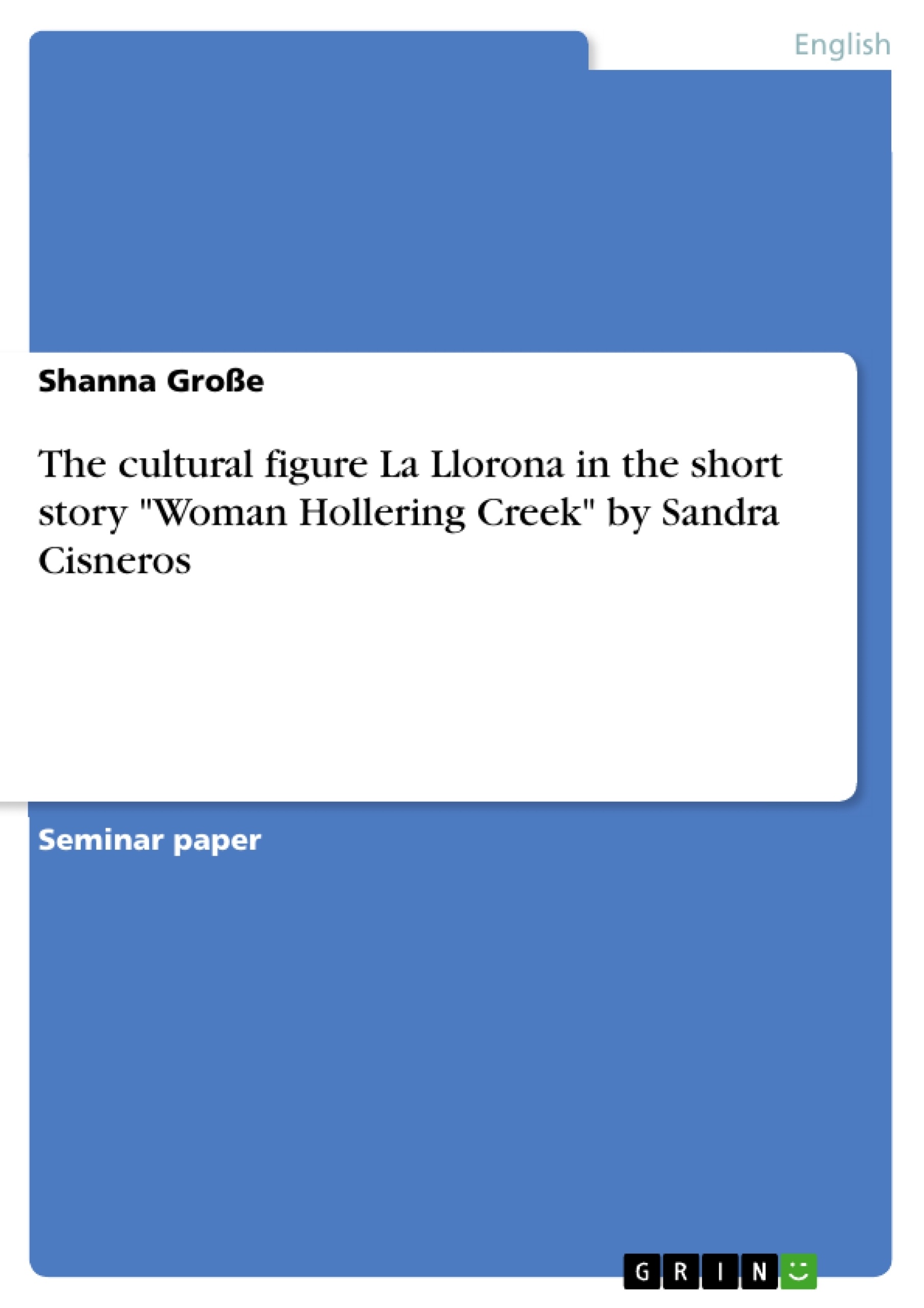In this paper, the author will analyze the figure of La Llorona, traces of her within the short story "Woman Hollering Creek" by Sandra Cisneros and the way in which Sandra Cisneros rejects common understandings of the myth by replacing them with a positive empowering image that encourages the protagonist Cleofilas to escape the cycle of abuse.
The short story "Woman Hollering Creek" accounts for the themes of gender roles, sexual harassment and abusive marriage within Chicana cultural identity at the Mexican-U.S border.
The cultural figure of La Llorona, which is prevalent in both Mexican and American culture, plays an important role in Cisneros’s short story. The motive of La Llorona is addressed several times throughout the story setting and becomes of growing importance to Cleofilas’ personal development. La Llorona becomes an ally to Cleofilas because of their shared experience through a common enemy, the male oppressor. Instead of fear and weakness, La Llorona becomes a symbol for strength and therefore empowers Cleofilas to finally find her own voice and stand up for her children and herself.
Table of Contents
- Introduction
- The Figure of La Llorona
- Tracing La Llorona in Woman Hollering Creek
- Rewriting La Llorona in Women Hollering Creek
- Conclusion
- References
Objectives and Key Themes
This paper analyzes the figure of La Llorona, its role in Sandra Cisneros's short story "Woman Hollering Creek," and how the author subverts traditional interpretations of the myth to present a more empowering image for Cleofilas, the story's protagonist.
- The cultural influence of La Llorona, Malinche, and Guadalupe on Mexican women's identities.
- The impact of patriarchal societal structures on women's roles and expectations.
- The evolution and adaptation of the La Llorona myth across different cultures and media.
- The use of La Llorona as a symbol of strength and empowerment for women facing oppression.
- The portrayal of abusive relationships and the struggles of Chicana women at the Mexican-U.S. border.
Chapter Summaries
- Introduction: The paper introduces the context of Sandra Cisneros's "Woman Hollering Creek" and its exploration of gender roles, abuse, and Chicana identity. It highlights the significance of La Llorona as a cultural figure and its relevance to Cleofilas' personal journey.
- The Figure of La Llorona: This chapter examines the historical and cultural significance of La Llorona, tracing its origins and evolution across various cultures. It explores the figure's multiple interpretations and how it has been used to shape and constrain women's roles within patriarchal societies.
- Tracing La Llorona in Woman Hollering Creek: This chapter delves into the presence of La Llorona within Cisneros's short story. It analyzes how the myth is integrated into the narrative and how Cleofilas' experiences resonate with the Llorona figure.
- Rewriting La Llorona in Women Hollering Creek: This chapter focuses on how Cisneros subverts traditional interpretations of La Llorona by presenting her as a symbol of strength and resistance. It explores how Cleofilas draws inspiration from La Llorona to break free from her abusive marriage and reclaim her agency.
Keywords
The key terms and concepts explored in this paper include: La Llorona, Chicana literature, gender roles, domestic violence, cultural identity, myth, folklore, empowerment, feminist theory, and the Mexican-U.S. border.
- Quote paper
- Shanna Große (Author), 2018, The cultural figure La Llorona in the short story "Woman Hollering Creek" by Sandra Cisneros, Munich, GRIN Verlag, https://www.grin.com/document/538506




